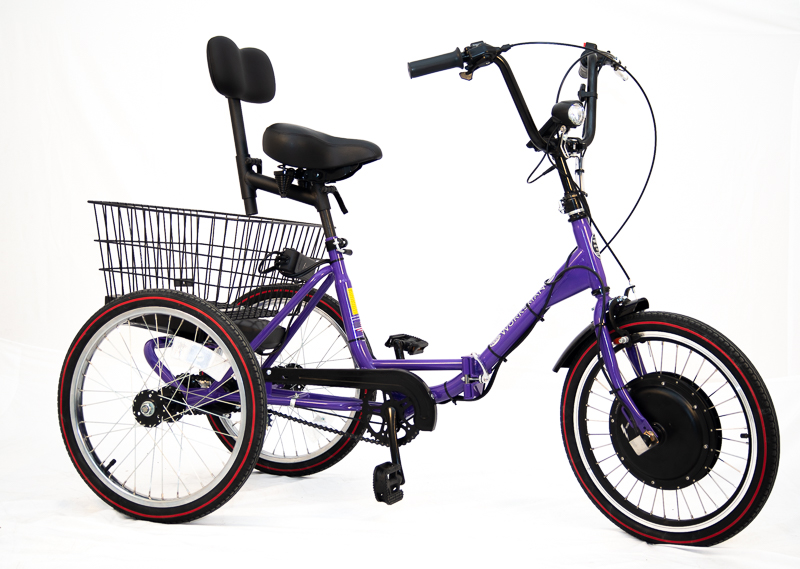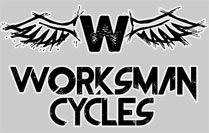What Are the Biggest Drains on an Adult Electric Tricycle's Battery?
 Electric tricycles for adults offer a comfortable, eco-friendly way to get around. But just like with any electric vehicle, battery management is crucial. Significant factors can drain the battery. You can take steps to extend the range and life of your electric tricycle's battery.
Electric tricycles for adults offer a comfortable, eco-friendly way to get around. But just like with any electric vehicle, battery management is crucial. Significant factors can drain the battery. You can take steps to extend the range and life of your electric tricycle's battery.
High Levels of Pedal Assist: One of the most appealing features of an electric tricycle is its pedal-assist system, which helps riders pedal easily. However, higher levels of pedal assist demand more power from the battery, leading to faster depletion. For instance, riding at pedal assist level 5 on flat terrain may feel effortless, but it rapidly consumes battery power. For example, a rider who typically covers 40 miles using moderate pedal assist might find their battery depleted after just 20 miles when constantly using the highest assist level.
Empower yourself to conserve energy by using lower levels of pedal assist—such as level 1 or 2—when riding on flat terrain. This simple adjustment can easily double your battery life while still offering some assistance. Save the higher assist levels for when you need that extra power, such as climbing hills or carrying heavy cargo.
-
Excessive Use of Throttle: While the throttle feature on adult electric tricycles is convenient for speeding up without pedaling, it is also a significant battery drain. Using the throttle at full power, especially during acceleration, consumes significantly more energy than moderate throttle use. For instance, if you rely heavily on the throttle during a 15-mile ride, your battery might drop to 30% by the end, compared to 50% or more when using it sparingly.
To optimize battery life, use the throttle in short bursts rather than for extended periods. For example, when starting from a stop, ease into the throttle gradually rather than hitting full power immediately. This reduces battery strain and prolongs its life throughout your ride.
-
Frequent Stops and Starts: Like in a car, frequent stops and starts on your electric tricycle drain the battery quickly. Each time you stop and start again, the motor has to work harder to get the trike moving. Imagine riding through city traffic with numerous stop signs. If you use the throttle or high pedal assist every time you accelerate, you could see your battery percentage drop much faster than expected.
To conserve energy, aim to maintain a steady pace when possible. For example, when riding in stop-and-go traffic, try coasting to a stop rather than coming to an abrupt halt. This not only saves battery life but also creates a smoother riding experience.
Steep Hills: Climbing hills is one of the most demanding activities for adults on an electric tricycle. The steeper the hill, the more energy your motor needs to exert to get you to the top, mainly if you use a high pedal-assist or throttle. For example, if you start a hill climb with your battery at 80%, you might notice it drop to 60% or lower by the time you reach the top—an alarming amount of battery usage for a short distance.
To mitigate this, use a combination of lower pedal assist and gears to make the climb easier on both you and the battery. If the incline is particularly steep, consider walking your trike up the hill or using a lower assistance setting to avoid rapidly draining your battery.
Carrying Heavy Loads: Be conscious of the weight you're carrying, as it plays a crucial role in how quickly your battery drains. The heavier your load, the more strain on the motor to maintain speed and momentum, especially when starting from a stop or riding uphill. For instance, if you're carrying groceries or equipment that adds an extra 30-50 pounds to your load, you could notice a significant difference in your battery's performance—what might usually last for 30 miles could drop to 20 miles or less.
To combat this, try to minimize the load whenever possible. If carrying heavy items is unavoidable, switch to a lower pedal assist level and ride moderately. This will help conserve battery power even when you're transporting extra weight.
Low Tire Pressure: The right tire pressure is essential for efficient battery usage. When tires are underinflated, rolling resistance increases, meaning the motor has to work harder to move the tricycle forward. Rolling resistance is the force that opposes the tricycle's motion. As a result, battery life diminishes more quickly. For instance, a ride typically requiring 40% of your battery could use 60% if your tires are underinflated by just a few PSI.
Check your tire pressure regularly, ensuring it meets the manufacturer's recommended level. Properly inflated tires reduce drag and smooth your ride, helping conserve battery power.
Extreme Temperatures: Temperature extremes—whether hot or cold—can affect battery performance. In cold weather, the battery's chemical reactions slow down, reducing capacity. In hot weather, the battery can overheat, degrading its long-term performance. For example, a rider might experience a 50% reduction in battery life on a cold winter day compared to a mild spring day.
To protect your battery, avoid riding in extreme temperatures whenever possible. If you must ride in cold weather, store your tricycle indoors beforehand to help maintain the battery's warmth—similarly, when it's hot, park in the shade to avoid overheating.
Understanding and managing the biggest drains on your adult electric tricycle's battery can significantly extend its life and range. These small changes can dramatically impact you, whether reducing your throttle use, maintaining proper tire pressure, or being mindful of how much weight you're carrying. Use these tips to get the most out of your electric tricycle, ensuring you enjoy longer rides without your battery running out.







